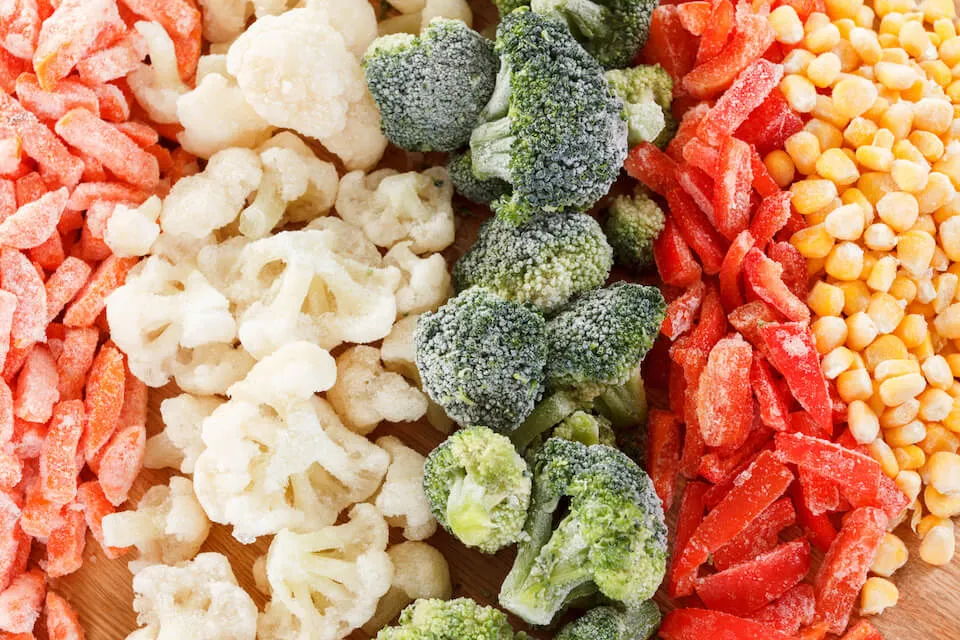Table of Contents
The Complete Guide to Freeze Drying: Technology, Applications, and Global Impact
Freeze drying, also known as lyophilization, represents one of the most sophisticated food preservation technologies available today. This revolutionary process has transformed everything from astronaut meals to emergency food supplies, creating products with extraordinary shelf life while maintaining exceptional nutritional value and taste.
Understanding Freeze Drying Technology
Freeze drying is a three-stage dehydration process that removes moisture from food by sublimation – the direct transition of ice crystals to vapor, bypassing the liquid phase. The process begins with freezing food to temperatures as low as -50°F (-45°C), followed by applying vacuum pressure while gradually warming the product. This allows frozen water molecules to sublimate directly into vapor, leaving behind a porous, lightweight structure that retains the food's original shape, color, and nutritional profile.
Unlike traditional dehydration methods that use heat, freeze drying preserves the cellular structure of food, maintaining up to 98% of its original nutritional content. The process removes approximately 95-99% of moisture content, creating an environment hostile to bacteria, yeasts, and molds that cause spoilage.
Exceptional Shelf Life and Storage Benefits
The most remarkable characteristic of freeze-dried foods is their extraordinary shelf life. When properly packaged and stored in cool, dry conditions, freeze-dried products can maintain their quality for 25-30 years. This exceptional longevity stems from the near-complete removal of moisture, which eliminates the primary catalyst for food degradation.
Properly stored freeze-dried foods retain their nutritional value, flavor, and texture for decades. The key to maximizing shelf life lies in appropriate packaging using oxygen absorbers and moisture barriers, combined with storage in temperature-controlled environments away from direct sunlight.
Popular Items for Freeze Drying
The versatility of freeze drying makes it suitable for an extensive range of food products:
Fruits and Vegetables: Strawberries, bananas, apples, corn, peas, and carrots are among the most popular freeze-dried produce items. These retain their vibrant colors and concentrated flavors while becoming lightweight and shelf-stable.
Proteins: Meats, poultry, seafood, and eggs freeze dry exceptionally well, maintaining their protein content and flavor profiles. Freeze-dried chicken, beef, and shrimp are staples in emergency food supplies and outdoor recreation meals.
Complete Meals: Entire dishes including pasta, rice meals, soups, and casseroles can be freeze-dried while preserving their complex flavors and textures.
Dairy Products: Ice cream, yogurt, and cheese can be successfully freeze-dried, though dairy products require more careful processing due to their fat content.
Beverages: Coffee has been one of the most commercially successful freeze-dried products, with instant coffee representing a multi-billion dollar global market.
Packaging, Storage, and Transportation
The success of freeze-dried foods depends heavily on proper packaging and storage methods. Modern packaging utilizes multi-layer barrier materials that protect against moisture, oxygen, and light. Mylar bags with oxygen absorbers are commonly used for consumer products, while larger quantities may be stored in #10 cans or specialized containers.
Transportation advantages of freeze-dried foods are significant. The 80% weight reduction compared to fresh foods dramatically reduces shipping costs and logistical complexity. Products can be transported without refrigeration, eliminating cold chain requirements and expanding distribution possibilities to remote locations.
Storage requirements are minimal compared to other preservation methods. Freeze-dried foods require only cool, dry storage conditions with temperatures ideally below 70°F (21°C) and humidity levels below 10%. This simplicity makes them ideal for long-term storage, emergency preparedness, and distribution in areas lacking refrigeration infrastructure.
Major Producers in the USA and Globally
The global freeze-drying market is experiencing robust growth, with projections indicating the market will reach $10.9 billion by 2033. The United States dominates the market with a 31.30% share, reflecting both technological leadership and strong domestic demand.
Major US Producers:
- Millrock Technology: A leading manufacturer of freeze-drying equipment serving pharmaceutical and food industries
- SP Industries: Specializes in freeze-drying equipment for laboratory and production applications
- Labconco Corporation: Focuses on laboratory-scale freeze-drying equipment
- Freezedry Specialties, Inc.: Provides both equipment and contract freeze-drying services
Global Market Leaders:
- GEA Group (Germany): One of the world's largest suppliers of freeze-drying technology for industrial applications
- Azbil Corporation (Japan): Major player in freeze-drying equipment manufacturing
- Shanghai Tofflon Science Technology Co. Ltd. (China): Leading Asian manufacturer of freeze-drying equipment
- IMA S.p.A. (Italy): Specializes in pharmaceutical freeze-drying solutions
- HOF Sonderanlagenbau GmbH (Germany): Provides customized freeze-drying systems
The commercial food sector includes major corporations like Nestlé and Starbucks, which utilize freeze-drying for coffee products, while companies like Mountain House and Backpacker's Pantry specialize in outdoor recreation meals.
Military Applications and Strategic Importance
Freeze-dried foods have revolutionized military nutrition, providing soldiers with lightweight, nutritious meals that require minimal preparation. Military Meals Ready-to-Eat (MREs) increasingly incorporate freeze-dried components to reduce weight while maintaining caloric density and nutritional value.
The strategic advantages for military applications include:
- Weight Reduction: Critical for soldiers carrying equipment over long distances
- No Refrigeration Required: Essential for field operations in remote locations
- Extended Shelf Life: Reduces logistics complexity and resupply frequency
- Rapid Rehydration: Meals can be prepared quickly with available water sources
- Nutritional Integrity: Maintains vitamin and mineral content essential for physical performance
Modern military rations utilize freeze-drying for main courses, side dishes, and even desserts, providing variety and palatability that improves soldier morale and nutrition compliance.
Space Travel and NASA Applications
NASA's adoption of freeze-drying technology has been instrumental in making long-duration space missions possible. The space agency extensively uses freeze-drying because it addresses multiple critical requirements for space food systems.
Space Mission Advantages:
- Weight Reduction: Removing water reduces payload weight by up to 80%, crucial for space missions where every pound costs thousands of dollars to launch
- Volume Efficiency: Compact packaging maximizes storage efficiency in spacecraft with limited space
- Extended Shelf Life: Essential for missions lasting months or years
- No Refrigeration: Eliminates the need for power-intensive cooling systems
- Nutritional Preservation: Maintains vitamins and minerals essential for astronaut health
The International Space Station regularly receives freeze-dried foods as part of resupply missions. Foods are packaged in specialized containers that allow for easy rehydration in zero gravity environments. NASA continues to refine freeze-drying techniques for future Mars missions, where resupply will be impossible and food systems must remain viable for years.
Historical significance includes the Apollo missions, where freeze-dried foods enabled lunar surface operations. The first meal consumed on the moon consisted of freeze-dried products, demonstrating the technology's reliability in extreme conditions.
Food Aid and Humanitarian Applications
Freeze-dried foods play a crucial role in international food aid and disaster relief efforts. Their unique properties make them exceptionally well-suited for addressing famine and emergency situations in challenging environments.
Humanitarian Advantages:
- Transportation Efficiency: Reduced weight and volume enable more efficient delivery to remote locations
- No Cold Chain Required: Eliminates refrigeration needs in areas with unreliable electricity
- Extended Distribution Window: Long shelf life allows for strategic stockpiling and gradual distribution
- Nutritional Density: Provides concentrated nutrition essential for malnourished populations
- Cultural Adaptability: Can be processed into familiar local dishes when rehydrated
International organizations like the World Food Programme utilize freeze-dried foods in emergency response scenarios. The technology enables rapid deployment of nutritious food aid to disaster-stricken areas where traditional fresh food distribution would be impossible or impractical.
Refugee camps and displaced population centers benefit from freeze-dried foods' storage stability and preparation flexibility. These products can be stored safely in temporary facilities and prepared with basic equipment, making them ideal for humanitarian logistics.
Future Trends and Market Growth
The freeze-drying industry is experiencing unprecedented growth driven by multiple factors. Consumer demand for convenient, healthy foods continues to expand, while outdoor recreation and emergency preparedness markets show strong growth trajectories.
Emerging Applications:
- Pet Food Industry: High-end pet foods increasingly utilize freeze-drying for premium nutrition
- Pharmaceutical Sector: Biological drugs and vaccines rely on freeze-drying for stability
- Cosmetics and Nutraceuticals: Beauty and health supplement industries adopt freeze-drying for product preservation
Technological Advancements:
- Energy Efficiency: New equipment designs reduce energy consumption by up to 40%
- Process Automation: Advanced control systems improve product consistency and reduce labor costs
- Scalability Improvements: Larger-scale equipment enables more efficient mass production
The global market is projected to reach $11.25 billion by 2028, with a compound annual growth rate of 10.8%. This growth reflects increasing recognition of freeze-drying's advantages across multiple industries and applications.
Conclusion
Freeze drying represents a convergence of advanced food science, engineering precision, and practical necessity. From enabling space exploration to addressing global hunger, this technology continues to expand human capabilities and improve quality of life across diverse applications.
The industry's rapid growth reflects not only technological advancement but also changing consumer preferences toward convenient, nutritious, and sustainable food options. As climate change and global population growth create new challenges for food security, freeze-drying technology will likely play an increasingly important role in ensuring reliable, nutritious food access for populations worldwide.
Whether supporting astronauts on the International Space Station, feeding disaster survivors, or providing backpackers with gourmet trail meals, freeze-dried foods demonstrate the power of scientific innovation to solve practical human needs. The technology's continued evolution promises even greater applications and benefits in the years ahead.






